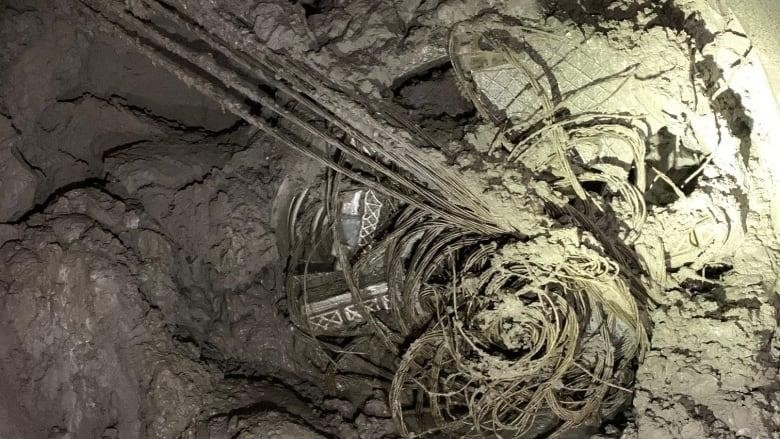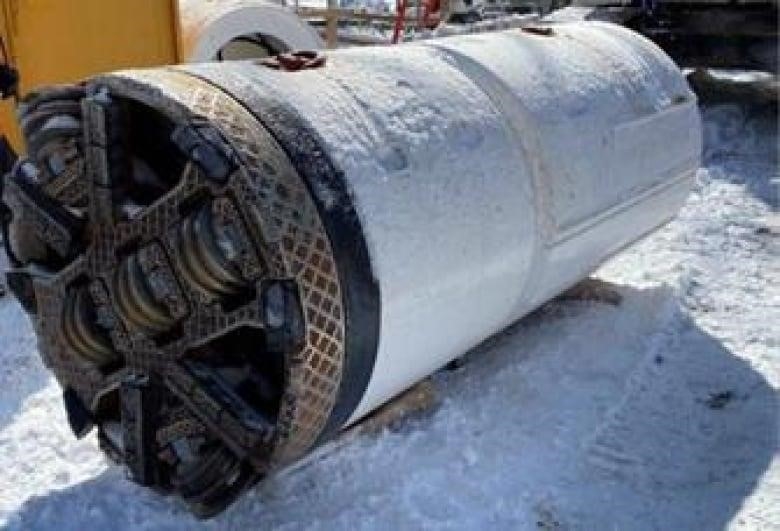
Work is being done on Old Mill Drive to fix a “serious health and safety risk.
The City of Toronto has started a delicate rescue operation in the west end that will cost taxpayers $9 million to get a boring machine out of the ground that got stuck last year when sewer work went wrong nearby.
Dozens of workers have been busy on Old Mill Drive for months trying to get the $3-million microtunnelling machine out of the ground. It got stuck last spring near Bloor Street West. A report that will be given to city councillors on Friday says that the situation poses a “significant risk to public health and safety.”
But the project has been a constant source of trouble for the people who live and work on the usually quiet street, says Paul Aiello, who owns a home on Old Mill Drive. He says that the noise, mud, and constant flow of construction vehicles are getting old for the people who live nearby.
“There’s a lot of trouble because we can’t get through the streets, and there’s no way to find out what’s going on,” he told CBC Toronto as the loud backup beeper of a construction vehicle cut him off.
Aiello said as he stood back and watched the vehicle turn into place and the workers move around it: “There is a lot of noise from construction and a lot of dirt… Even the park is pretty much out of order.”
“The road began to fall apart.
Greg Tershakowec’s dental office has a view of the road, which is now fenced off to keep people away from the construction zone. He says that the trouble has made it hard for some patients to get to his office.
“It’s annoying to me, but you have to deal with it; the noise is always there,” he said.
Tershakowec says that it was clear that something was very wrong last spring.
“What happened was that the road started to break apart at first,” he said. “And that was the first sign that something was wrong.”
In March 2022, work started on Old Mill Drive to dig a new storm sewer. The project was made to fix the fact that basements in the area were always getting wet. To make the new sewer tunnel, city workers chose to use a remote-controlled micro-tunnelling boring machine that is 1.5 meters wide and 5 meters long.
The machine was supposed to be put 18 meters below ground and move 282 meters to an exit shaft that had already been built on Bloor Street West. Workers had to put it deep underground so it wouldn’t get in the way of the Bloor-Danforth subway line, which runs nearby.

But with only seven meters left to go, the machine hit 14 underground steel tiebacks that had been used to build a condo building nearby. It got caught up in them and is now bent and going in the wrong direction.
When the city first planned the route, it says it didn’t know the tiebacks were there. But when the machine hit the tiebacks, a search of the city’s records showed that the developer had permission from the city to leave them underground after the project was done.
Mika Raisanen, who is in charge of the city’s engineering and construction services, says that workers dug by hand to get to the machine, but that wet soil and water have made it harder to get it out. Now, trucks come and go from the area every day to dry out the ground around the machine.
That will let workers pull the machine apart and take it out of the building in pieces.
‘Back to square one
Raisanen said that city staff thought about a number of options, including leaving the expensive machine in the ground, but that would have meant starting the project over and digging a new tunnel.
He said, “We had to stop the operations and sort of strengthen our rescue efforts.” “Also, a couple of sinkholes were found, and we had to fill them in.”
In the end, the city started to take apart the machine and finish the last seven meters of the sewer tunnel by hand last spring.
Raisanen said, “We look at cost, risk, what can happen, and what’s possible.” “And also, what would happen if we just left it where it was?” So, we’re back where we started.”
He says that, depending on the weather over the next few weeks and how wet the site is, they hope to get the machine out by the beginning of April. The sewer tunnel will be done by hand.
“This exact situation is not something we do every day,” Raisanen said, asking residents for their patience because he knows they’ve had to deal with a lot of trouble.
He said, “We’re almost done with the project.”
“When all the work is done, it will make flooding less likely.” That’s what’s meant.
